-
CATEGORY ::
- All Seeds /
- All Pasture Seed /
- All Pasture Grasses
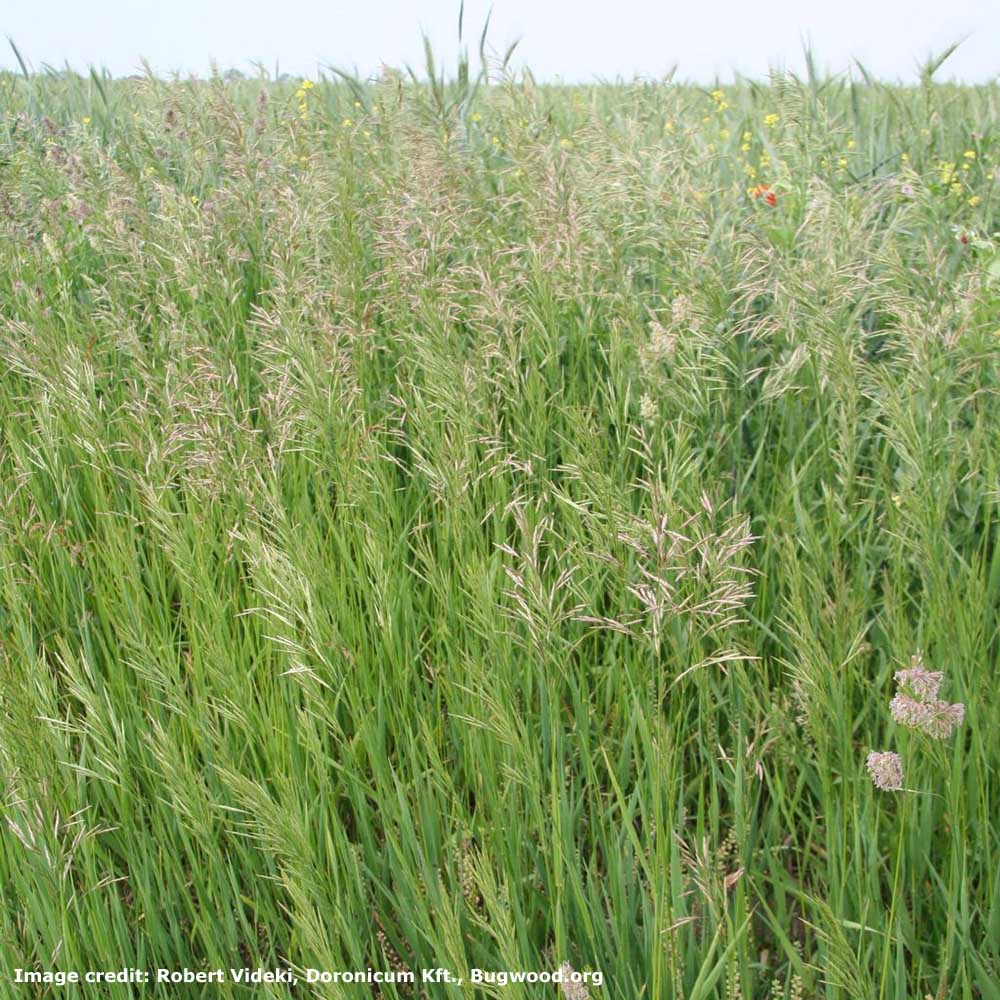
Smooth Brome
LATIN NAME
Lolium multiflorum
SEASON
Annual
WHEN TO PLANT
Spring - 6 weeks before first frost
MOISTURE REQUIREMENTS
Moderate
CROP HEIGHT
12 - 36 inches
COLD TOLERANCE
Excellent
HEAT TOLERANCE
Moderate - high
SHADE TOLERANCE
Fair - moderate
DAYS TO MATURITY
80 - 100 days
PLANT CHARACTERISTICS
Palatable, quick establishment, high yield
About...
Smooth Brome (Bromus inermis) - Smooth Brome is a perennial sod-forming grass growing 1 - 3 feet tall and produces large seeds, 1/4 inch long. It is best suited for hay, early spring pasture or silage. It has deep roots and spreads by underground rhizomes. This grass is highly palatable, high in protein content, and relatively low in crude-fiber content.MORE PASTURE GRASSES OPTIONS
Planting Directions
SOWING TEMPERATURE
50F - 65F
SEEDING RATE
30 - 40 lbs per acre
AVERAGE GERMINATION TIME
5 - 14 days
PLANTING DEPTH
1/4 inch
SOWING METHOD
Broadcast or drill
ENVIRONMENT
Full sun
USDA ZONES
3 - 9
ESTABLISHMENT RATE
Rast
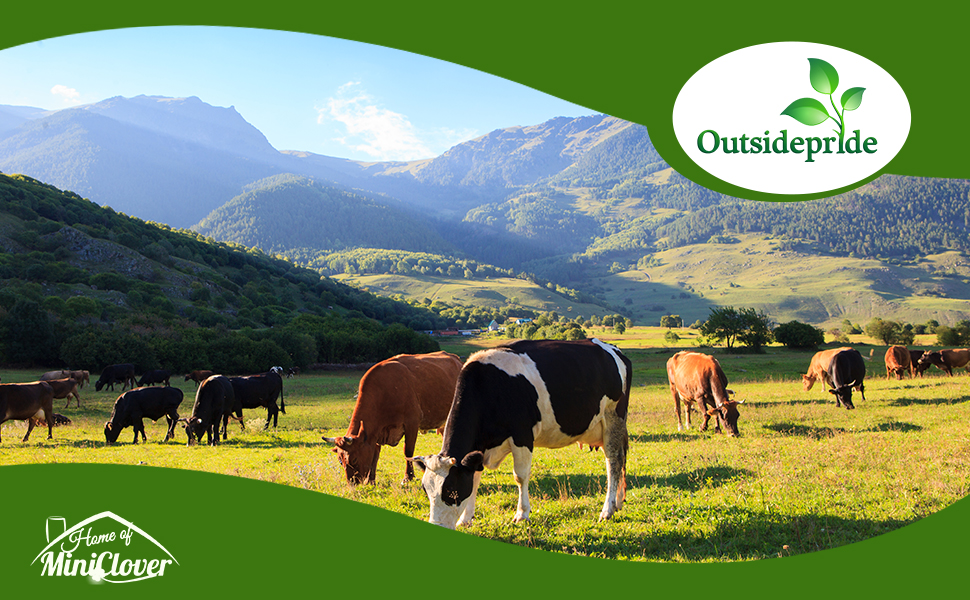

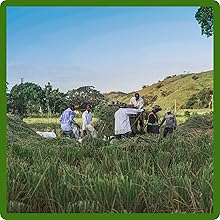
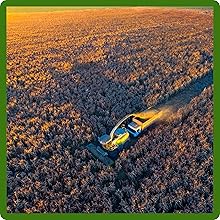


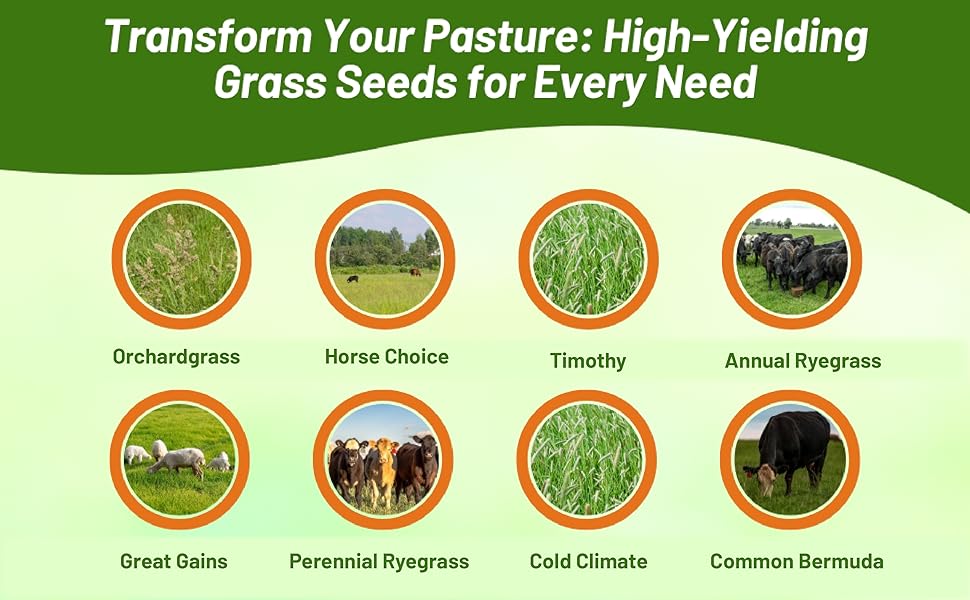

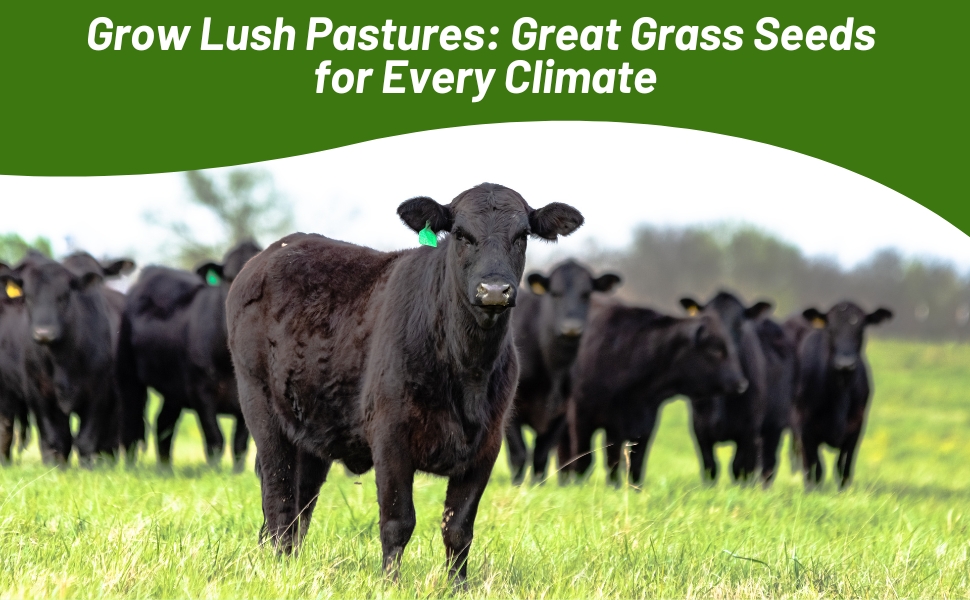
Tetraploid annual ryegrass that has larger leaves, a higher water content, and better palatability than many diploid varieties. This ryegrass will produce high quality feed for use as pasture, hay or silage. It was bred for vigor, disease resistance, and high performance. It is highly resistant to the major forage diseases including crown and leaf rust, leaf spot/scald, powdery mildew, and pythium blight.
Produces excellent succulant long-term grazing if sown alone or in combination with fall-sown small grains and annual clovers. It is a new generation ryegrass with exceptional plant vigor, forage yielding ability, stress tolerance, and disease resistance.
Protein content is in the 24 to 40% range depending on nitrogen levels applied and stage of growth at harvest.
Annual ryegrass can be used to quickly stabilize disturbed sites subject to erosion because seedling establishment and root growth are rapid. This makes this rye grass and excellent choice for quick erosion control, a cover crop, or for pasture uses.
Specifications
- New Seeding Rate: 30-40 lbs/acre/broadcast
- Grazing Use: Beef, Dairy, Sheep, Horse, Ratite
- Maturity: Late
- Hay: Excellent
- Silage/Green Chop: Excellent
- Controlled Grazing: Excellent
- Set Stocking: Excellent
- Crop Land Pasture: Good
- Drought Tolerance: Low
- Wet Soil Tolerance: Moderate
- pH Range: 5.0 - 8.0
- Fertility Requirements: Medium-High



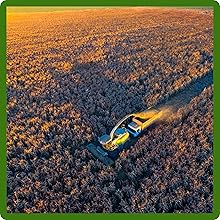

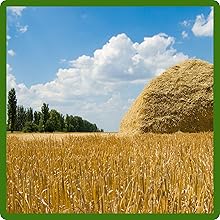

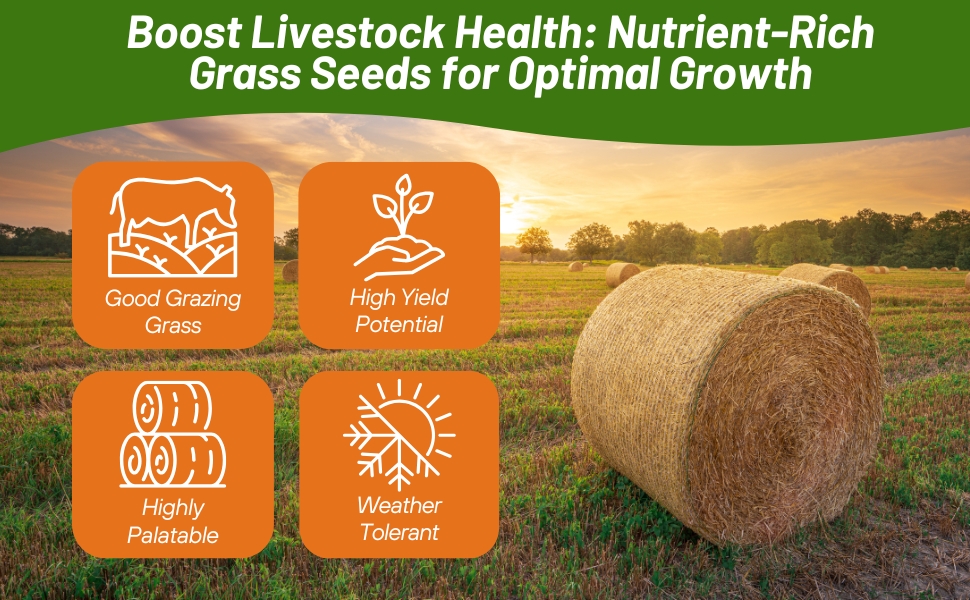
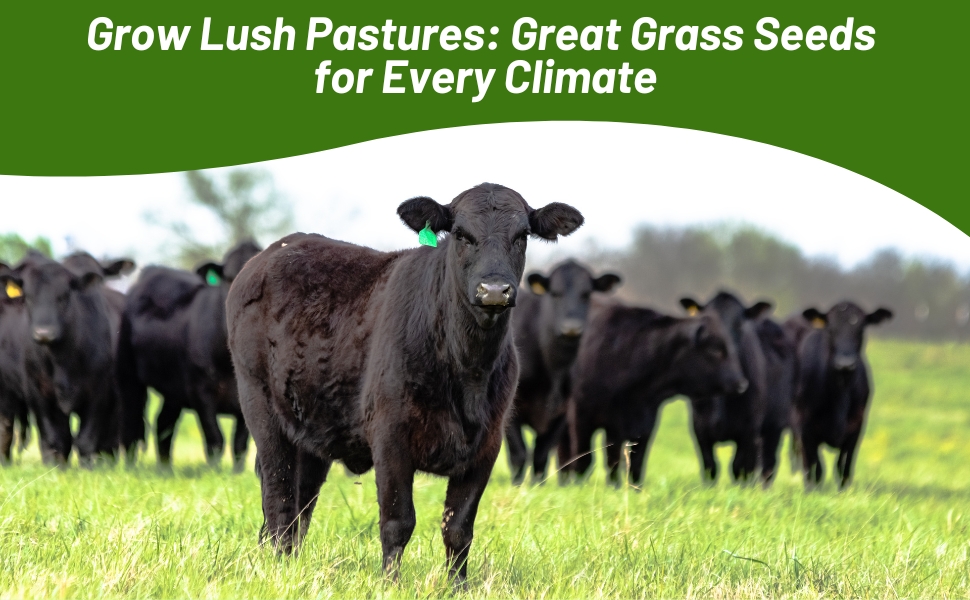
This all-purpose pasture mixture is an excellent choice for almost any area in the United States. It not only gives the great forage grasses, but gives you the added benefit of clover for higher protein and nutrition as well as highly palatable and quick establishing annual ryegrass.
Approximate Percentages:
- 20% Tetraploid Perennial Ryegrass
- 20% Orchardgrass
- 20% Tall Fescue
- 15% Timothy
- 15% Tetraploid Annual Ryegrass
- 5% New Zealand White Clover
- 5% Medium Red Clover
This blend can work for horses in certain situations, but would be better for cattle, sheep, alpacas, and other grazing animals. Clover content may be too rich for some horses and alpacas.
Tetraploid Perennial Ryegrass
This ryegrass possesses a very high disease resistance and tolerates close grazing. Fair to good winter hardiness has been reported in most trials. It is very well suited to management intensive grazing, but hay and silage management will work as well. When mixed with White Clover, ryegrass forms an unbeatable pasture.
Orchardgrass
Orchard grass is a rapid growing bunch grass which has the ability to grow on relatively poor soils. Orchard grass is generally the earliest maturing cool season grass. It is usually one week earlier in maturity than tall fescue and two weeks earlier than smooth brome grass. When selecting a variety consider finding a cultivar that is later in maturity and has resistance to rust. If adequately fertilized, production is distributed well through the growing season. It does well in drought and in dry land conditions. It produces high amounts of forage in the first harvest with a high capacity for re-growth. It will produce high amounts of forages in subsequent cuts as well.
Timothy
Timothy is one of earliest grasses known in the U.S. A short-lived, winter-hardy perennial bunchgrass, it is often seeded in a mixture with alfalfa, clover, or birdsfoot trefoil. Adapted to high elevations and to areas of at least 18 inches of annual rainfall. Easy to establish, easy to handle for hay. Well known as prime horse hay crop. Used extensively for revegetation of forest land and for erosion control in many areas. Adapted to the fertile, moist, medium- heavy soils of the Pacific Northwest, and to the Great Lakes and New England states.
Tall Fescue
A deep-rooted, long-lived perennial bunchgrass. Thick stands will produce a tough sod if mowed or grazed. Vigorous, grows well on wet and dry soils. Tolerant of poor drainage, is also drought resistant; tolerant of both strongly acidic and strongly alkaline soils. Excellent for summer pasture and hay, also for erosion control. Yields well in areas of at least 18 inches of annual rainfall. Produces abundantly with irrigation and high fertility. Best seeded with legumes for added palatability and nutrition levels. While a vigorous plant, new seedings are somewhat slow to establish. Should not be grazed too soon, and not the first winter. Adapted to wide range of climatic conditions.
Tetraploid Annual Ryegrass
A tetraploid annual ryegrass has larger leaves, a higher water content, and better palatability than many diploid varieties. It will produce high quality feed for use as pasture, hay or silage. It was bred for vigor, disease resistance, and high performance. It is highly resistant to the major forage diseases including crown and leaf rust, leaf spot/scald, powdery mildew, and pythium blight.
Tetraploid annual rye produces excellent succulant long-term grazing if sown alone or in combination with fall-sown small grains and annual clovers. It is a new generation ryegrass with exceptional plant vigor, forage yielding ability, stress tolerance, and disease resistance.
New Zealand White Clover
New Zealand white clover is highly palatable, often used in pasture mixures. As a pasture plant, white clover yields are greatest in mild humid climates. Best adapted to well-drained silt loam and clay soils with a pH range from 6.0 to 7.0 in humid and irrigated areas. With adequate soil moisture and fertility, it can be grown on sandy soils. It is not tolerant of saline or highly alkaline soils. The plant is shallow-rooted, seldom goes deeper than 2 feet. For pastures, white clover is almost always seeded with grass to prevent bloat and reproductive problems. The flower color is usually white, but may be slightly pinkish.
Medium Red Clover
Medium red clover is the most widely adapted of the true clovers. This short-lived perennial is grown in Canada and most of the U.S. except the Great Plains states and the southwest. mixes well with grass, used for hay, psture, and soil improvement. Fertile, well-drained loams, silt loams, even faily heavy textured soils are preferred to light or gravelly soils. Red clover will grow on moderately acidic soil, but yields are maximized when pH is 6.0 or higher. An early flowering type, it can produce two or three hay crops per year. Fits well into three and four year rotations. Red clover is used extensively in pasture mixes and for renovating old pastures. Grass should be included in clover mixtures for grazing to reduce chances of bloat. Rotational rather than continuous grazing will help prolong the life of the stand. Most plants produce rose purple or magenta flowers in the seeding year.
Seeding Rate
30 to 40 lbs/acre.

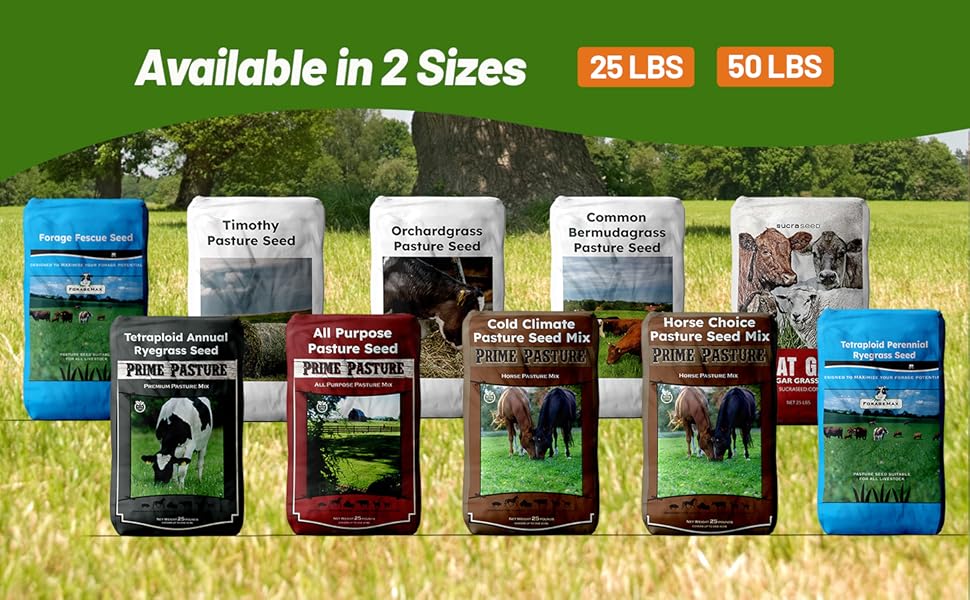


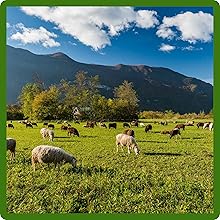
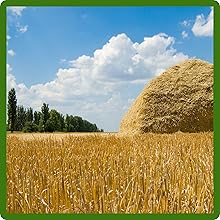
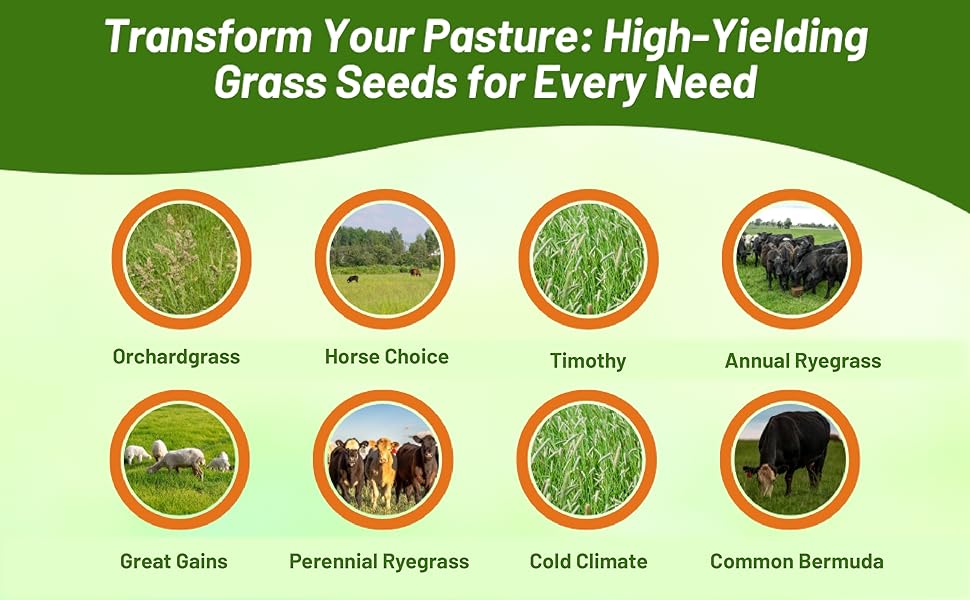
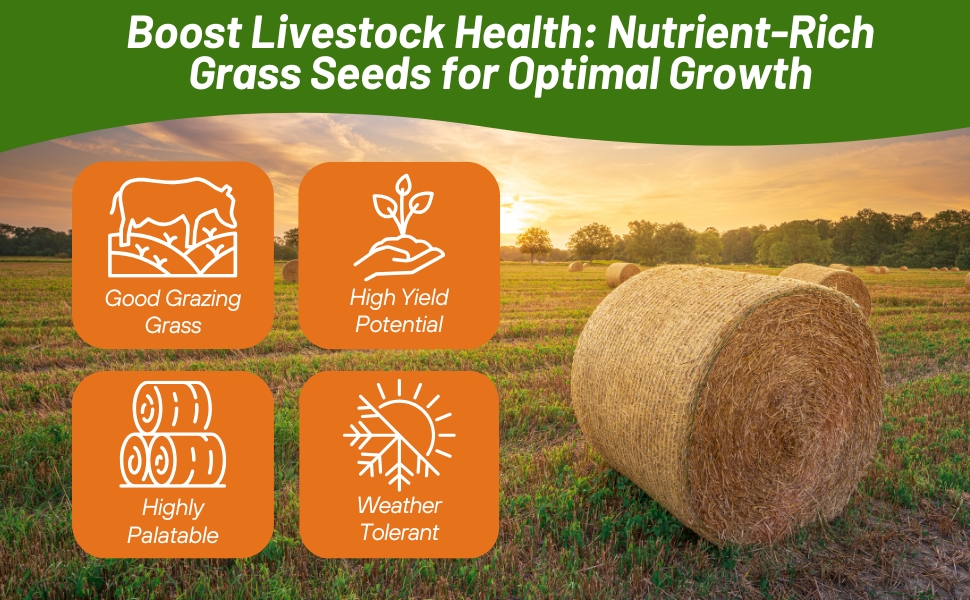
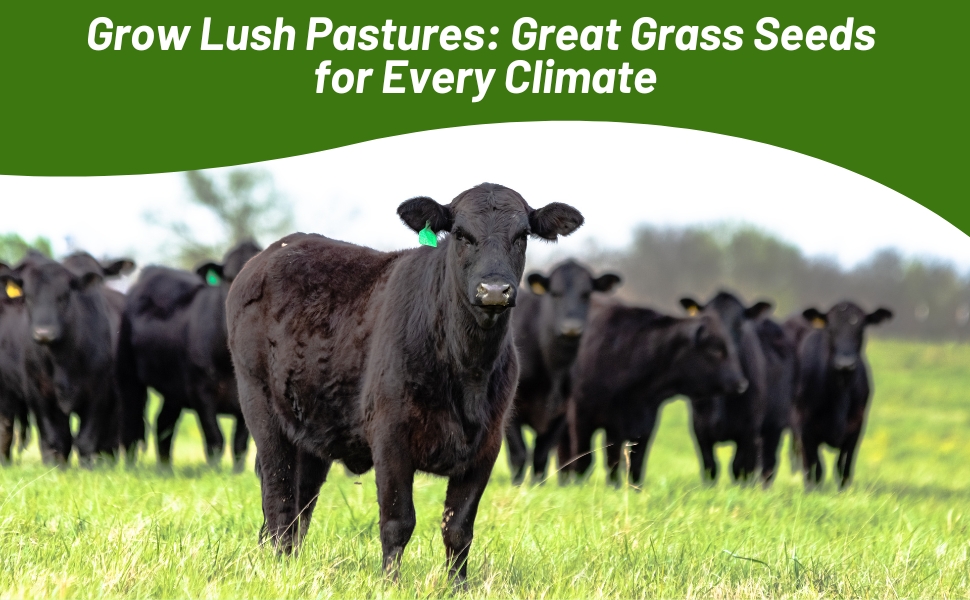
Forage Bermuda Grass Seed - Common bermudagrass (Cynodon dactylon) is a warm-season, perennial, sod-forming grass widely used for forage in the southern United States. It's known for its drought tolerance, ability to withstand heavy grazing, and its resilience, making it a popular choice for pastures and hay production. It spreads through both stolons (aboveground stems) and rhizomes (underground stems), forming a dense turf. It's suitable for grazing by cattle, sheep, and goats.
Seeding Rate: 10 - 15 lbs/acre.
Seeding Depth: 1/8" - 1/4"
The key features of forage bermudagrass blend include:
- Early spring green-up for early production
- Extreme drought tolerance
- Fast establishment
- Winter hardiness
- Quick cover
- Adaptation to all areas where bermudagrass is grown
- Decreased costs compared to sprigs or cuttings
- Several cuttings
Establishment:
Bermudagrass is an extremely drought-tolerant warm season perennial grass that is adapted to a wide range range of soil conditions. Soil temperatures should be at least 65F. and warming. The recommended seeding rate for coated bermudagrass is 12-15 pounds per acre. Seeding depth should be 1/8 to 1/4 inch deep into a very firm seed bed and good seed to soil contact is important. Fertilizer should be applied based on results from a soil sample and Nitrogen should not be applied until 3-4 inches of growth. When planted at the right depth and temperature, bermudagrass emerges in 14-21 days. Weed control is also a key factor for success. Light grazing or mowing during establishment can help mitigate the growth of weeds. Talk to your local extension agent to discuss a weed control program that is right for you.Seed Bed Preparation:
Proper seed bed preparation cannot be stressed enough when it comes to planting any bermudagrass. A method of gauging the correct firmness is if you can walk across the field without sinking 1/4 inch below the soles of your shoes. Seed bed firmness is especially important if no-till drills or broadcast seeders are used. Brillion planters are useful in conditioning the fields and are the preferred planter for bermudagrass.
Planting bermudagrass in a firm seed bed helps in proper seed placement and reduces the chance of burying the seed too deeply with loose soil. It also provides good seed to soil contact allowing for better soil moisture movement to the seed. Bermudagrass planted in loose seed beds can often be identified by quicker seedling emergence in the wheel tracks of the planter, than in the rest of the field.
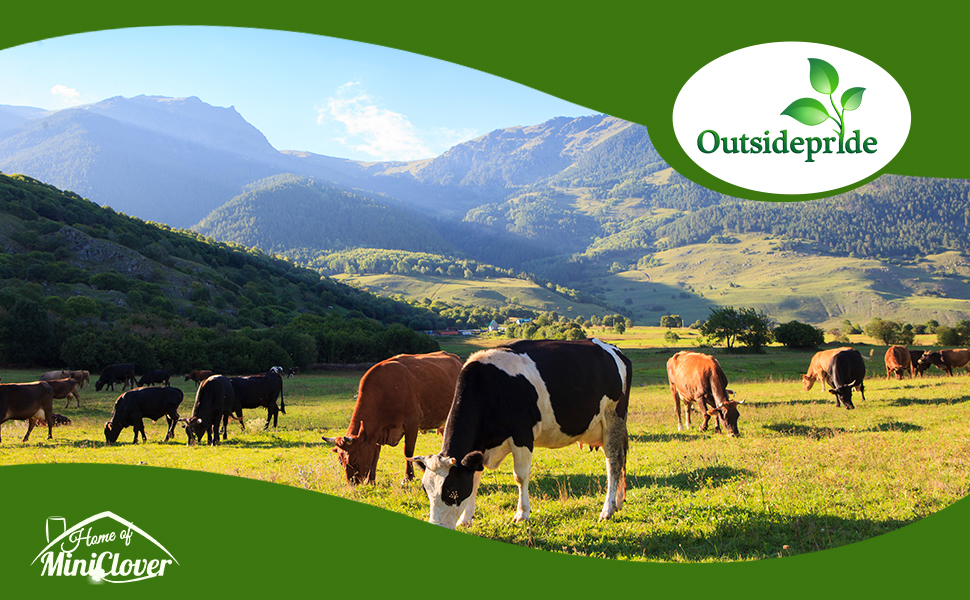


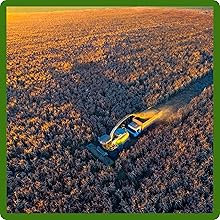


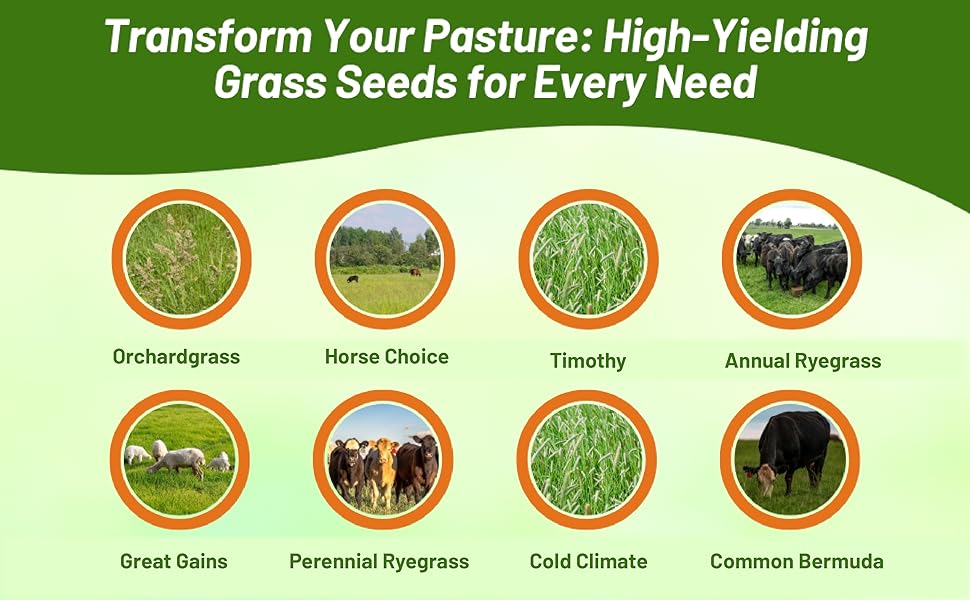
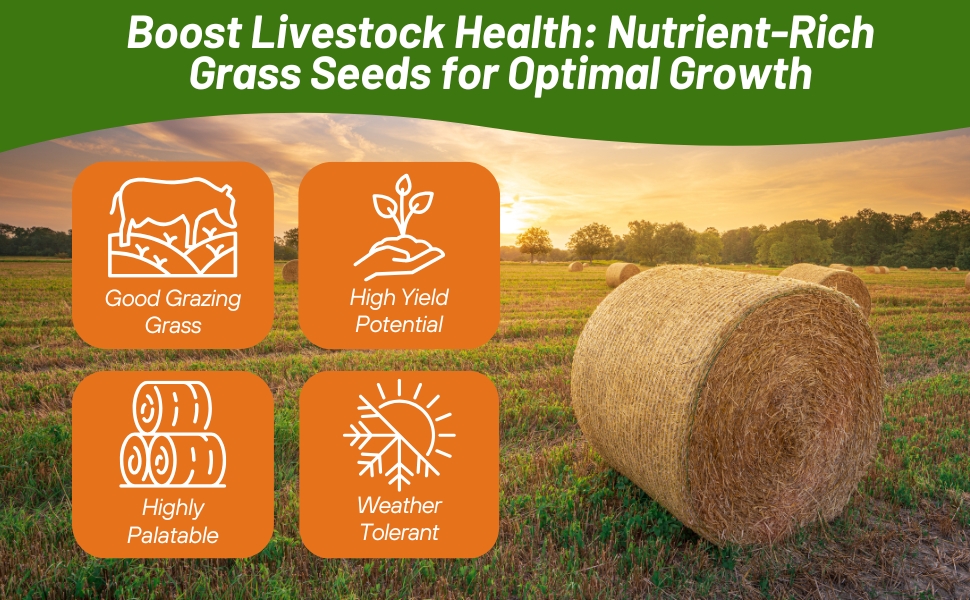
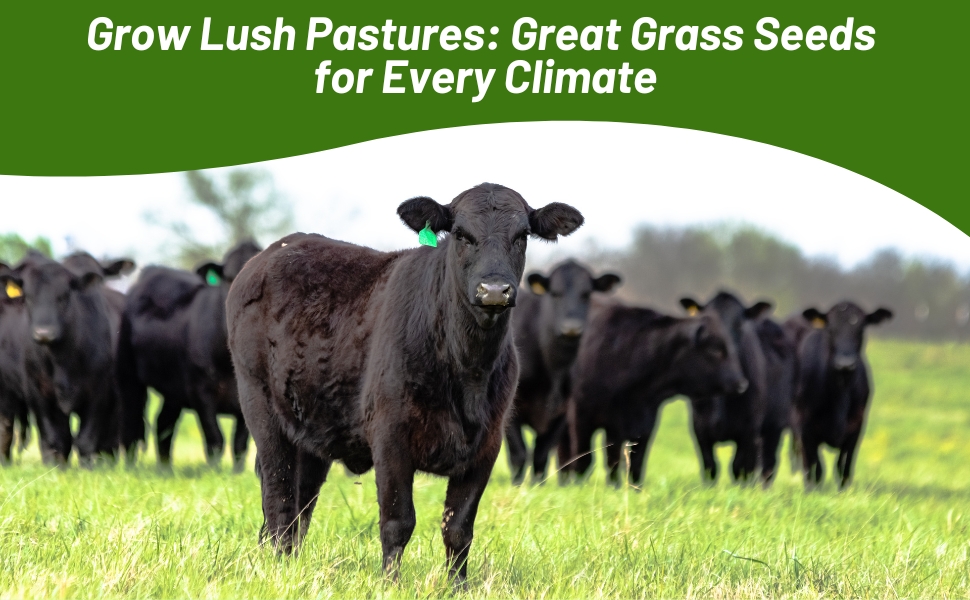
Forage tall fescue is a soft-leaf tall fescue grass with excellent quality forage, high yields and very good persistence. Compared to other forage tall fescues, our fescue grass has demonstrated superior palatability and is endophyte-free. This forage fescue produces narrow leaves which make thicker stands that are highly tolerant to grazing. Broad adaptability and resistance to major diseases makes fescue an excellent forage choice.
While tall fescue grows best on deep, moist, medium textured soils with a neutral pH, it can tolerate a wide pH range (4.7-9.5), as well as thin or poorly drained soils. There are major differences in its ability to tolerate frost and drought. Individual plants may produce rhizomes which aid in persistence under heat and drought stress. Forage tall fescue grass is well suited to situations where high forage dry matter production and persistence are the main objectives. Forage fescue grass grows well in a range of soil conditions. It can be used for hay production or grazing in both the northern and southern parts of the United States.
Tall fescue is used especially for grazing, stockpiling and hay in the US. It produces most of its total yield in the spring and has a high nutritive value in the fall, making it particularly suited for stockpiled forage. Soft leaf varieties have been developed for increased palatability and nutrient intake. This endophyte-free variety has been developed to lower the alkaloid content of tall fescue and reduce the incidence of animal disorders caused by the endophyte fungus.
This Forage Fescue breeding is focused on:
- Combining palatability & overall nutrient intake with high drought yield
- Introducing non-toxic endophytes to increase persistence & pest resistance
- Increasing rhizome length & incidence
- Resistance to leaf diseases (rust, xanthomonas, hilminthosporium)
- Increased productivity in the summer & fall
Forage Fescue Seeding Rate
25 to 30 lbs/acre.
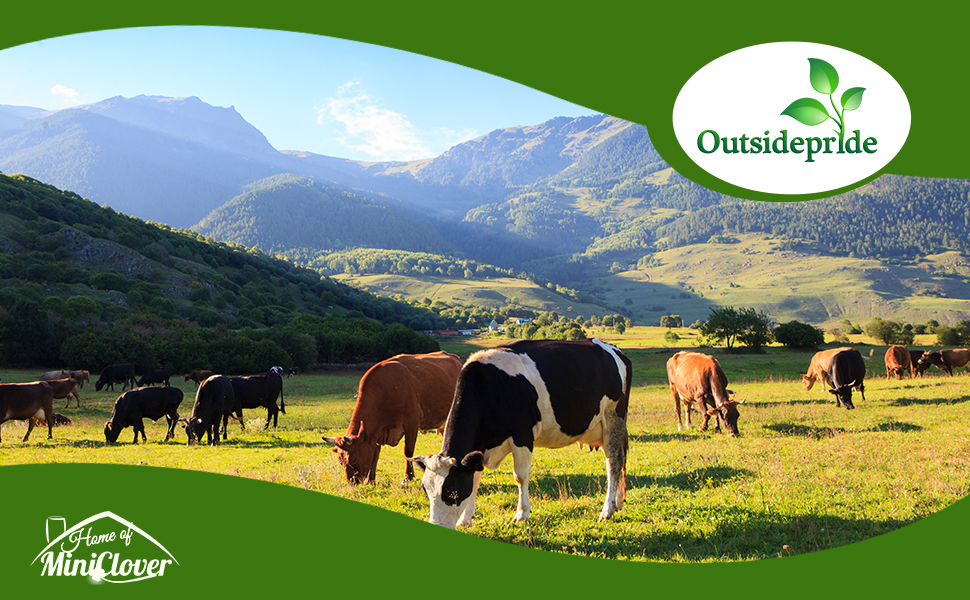
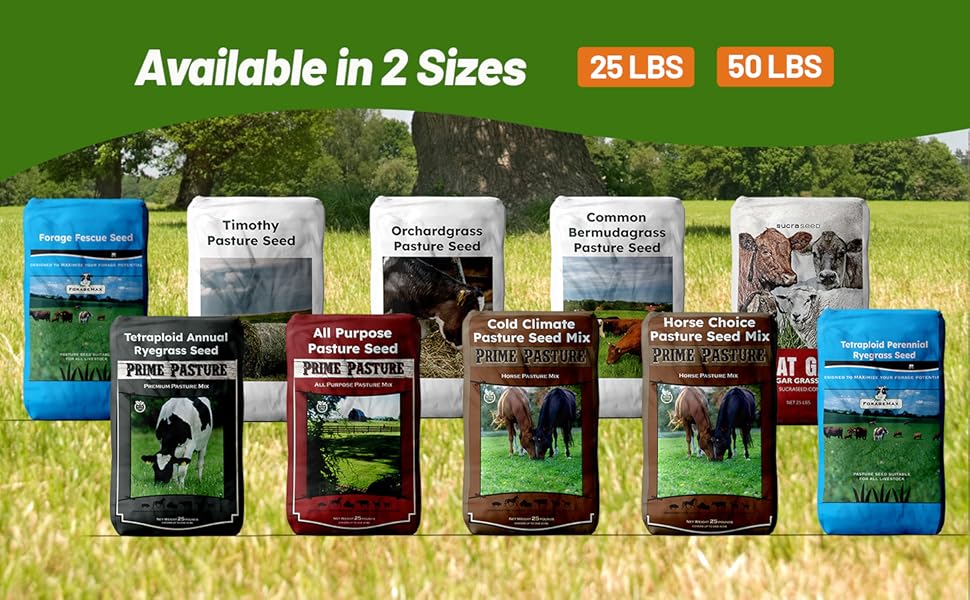
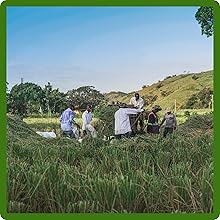
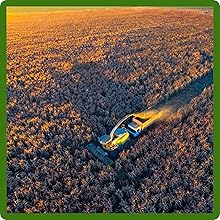
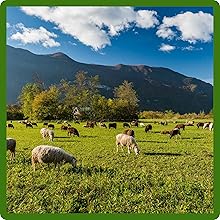

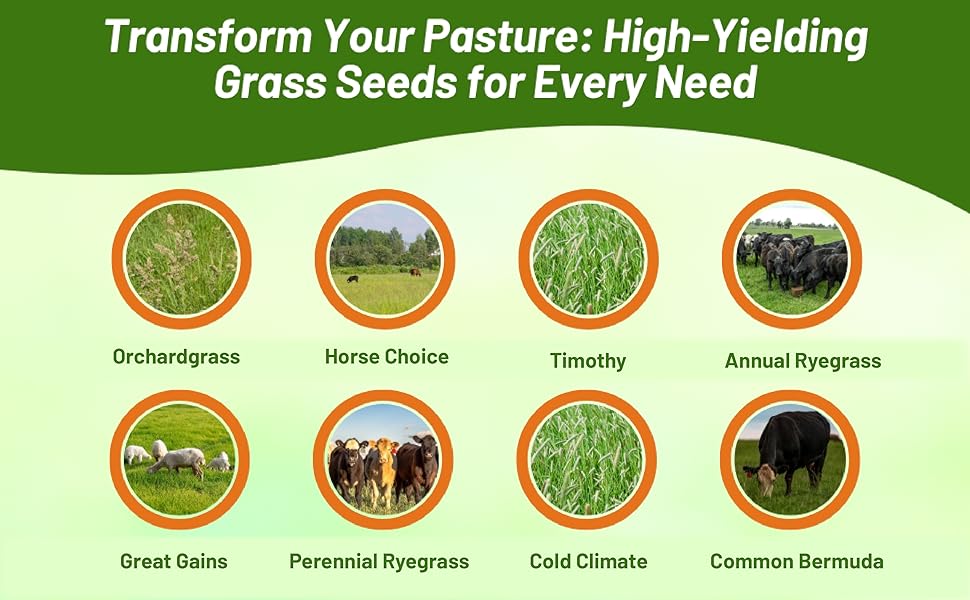
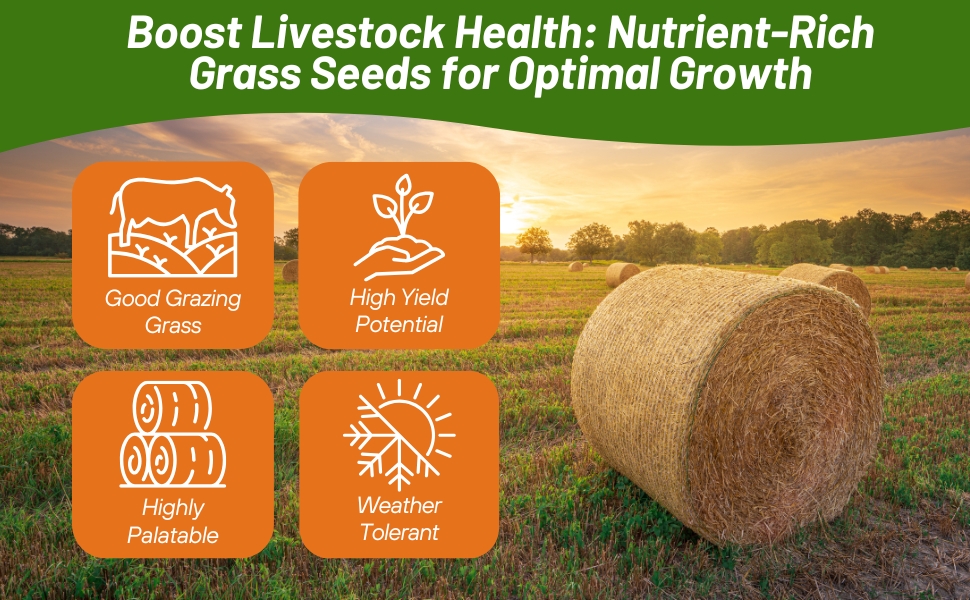
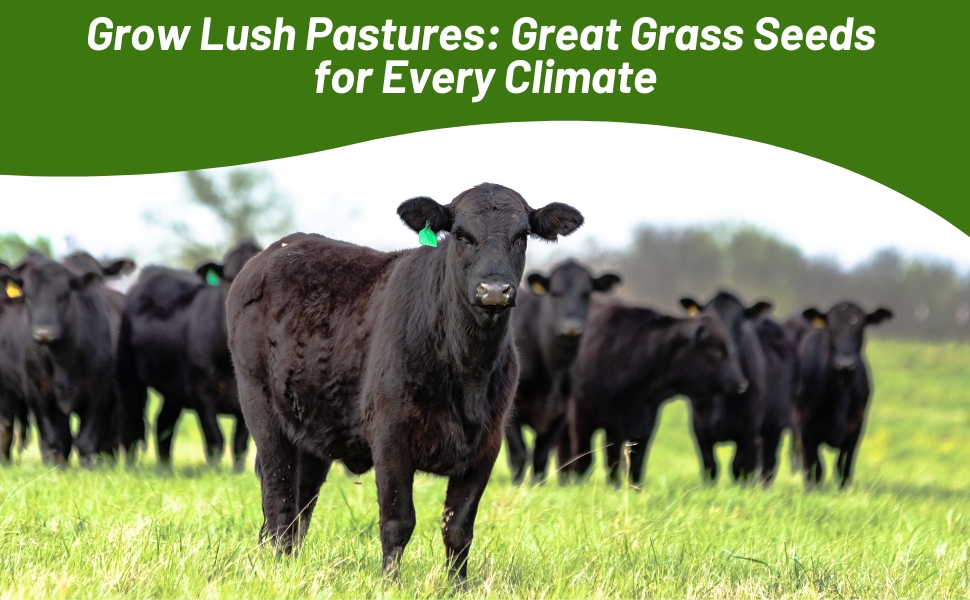
Professional's Choice horse pasture mixture consists of orchardgrass, timothy, endophyte-free tall fescue, and Italian ryegrass. While designed primarily for horse pasture, this mixture is often used for other livestock pastures where legumes are not desired.
When you put orchardgrass, timothy, fescue, and Italian ryegrass together you have a winning pasture combination with high production for years to come. Works well in any region of the United States except the deep South unless fall overseeding.
Approximate Percentages:
- 35% Amba Orchard Grass
- 25% Safe Tall Fescue
- 25% Corral II Intermediate Ryegrass
- 15% Climax Timothy
Timothy
Timothy is a winter-hardy bunchgrass that is easy to establish, and is well known for premium horse hay. Adapted to fertile, moist, medium heavy soils around the country. Responds rapidly to fertilization. Timothy mixes well in combination with other grasses and legumes. Timothy is easy to establish new pastures, and to over-seed old pastures that need rejuvenated.
Safe Tall Fescue
Safe is adapted to about the same area as Kentucky-31 but matures about 7 to 10 days earlier. The two varieties have similar disease resistance. Safe has consistently been the highest yielding tall fescue variety in North Carolina tests for the past several years, generally producing 8,000 to 12,000 lb of dry forage, and one year producing 14,400 lb.
Corral II Intermediate Ryegrass
Intermediate ryegrasses are generally longer lived than common annual and western types and tend to be bi-annual in nature. They are quick to establish, high yielding and being tetraploid, they are highly digestible. They are very suitable for silage, hay production and grazing. Heading dates are usually late in May. Benefits include increased animal production, increased yields, palatability & intake, quick utilization of forage. Ryegrass does well in soils with a wide pH range from 5 - 8.
Orchard Grass
Orchard grass is a rapid growing bunch grass which has the ability to grow on relatively poor soils. Orchard grass is generally the earliest maturing cool season grass. It is usually one week earlier in maturity than tall fescue and two weeks earlier than smooth brome grass. When selecting a variety consider finding a cultivar that is later in maturity and has resistance to rust. If adequately fertilized, production is distributed well through the growing season. It does well in drought and in dry land conditions. Needs lime on acidic soils.
Seeding Rate
40 to 50 lbs/acre.
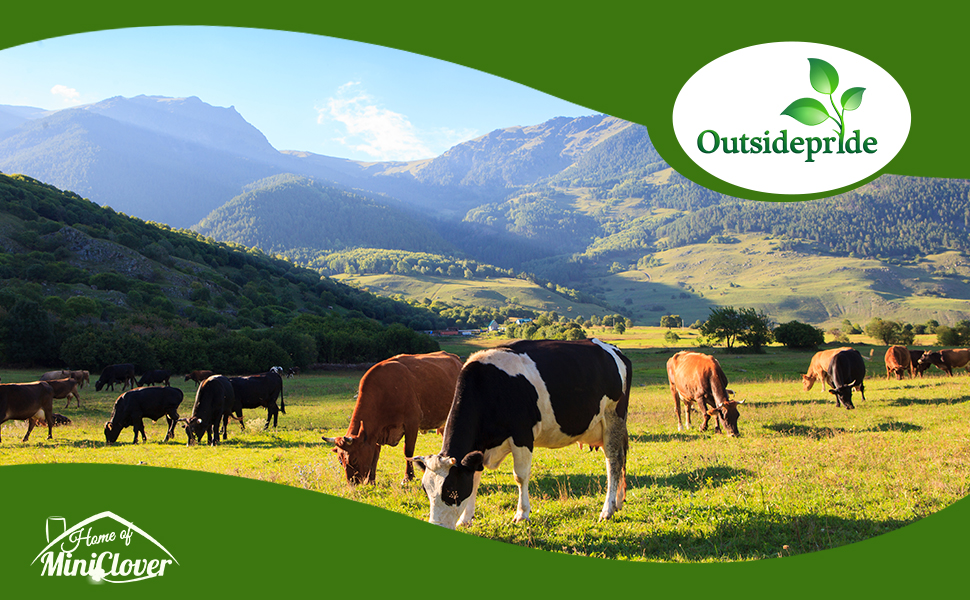
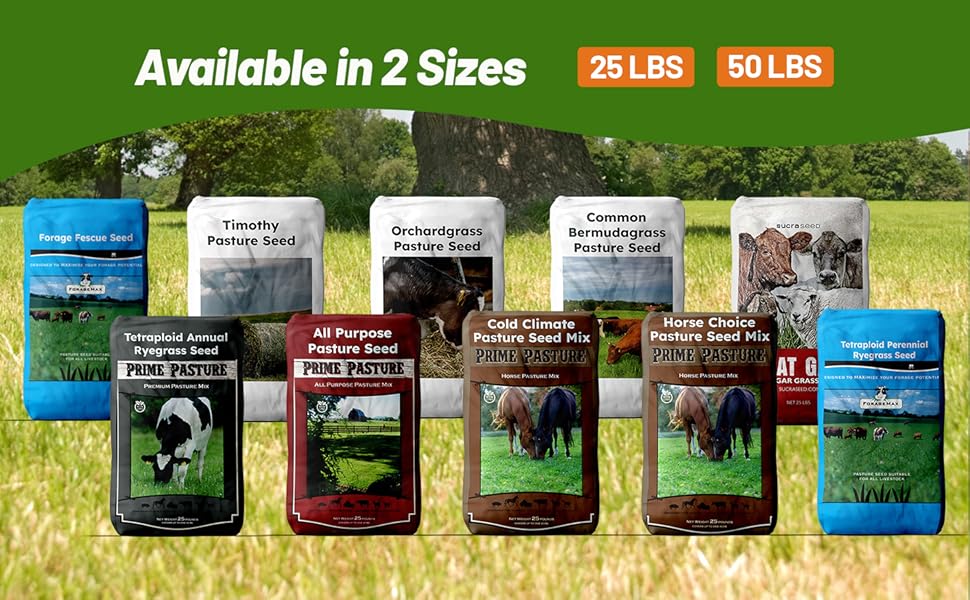
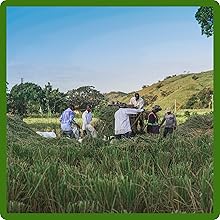
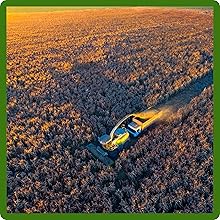
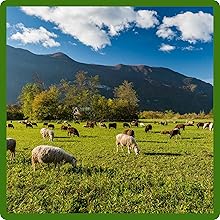
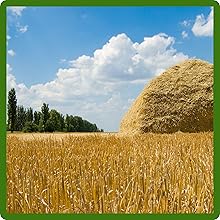
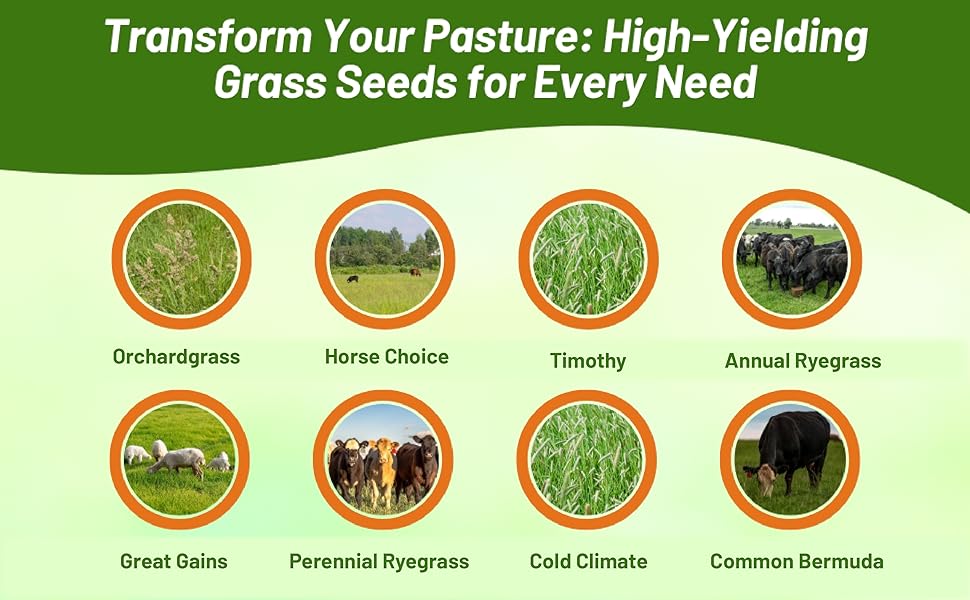
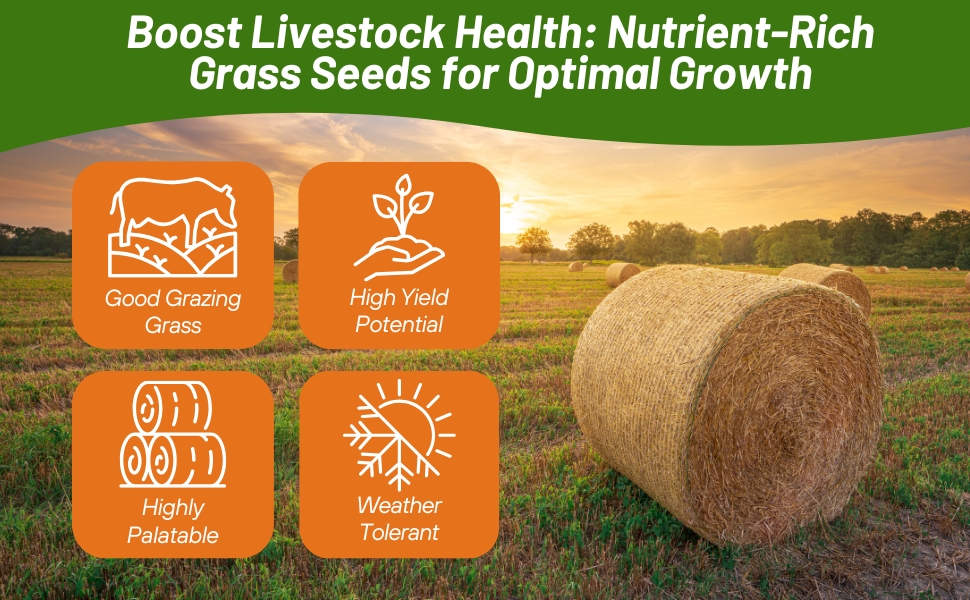
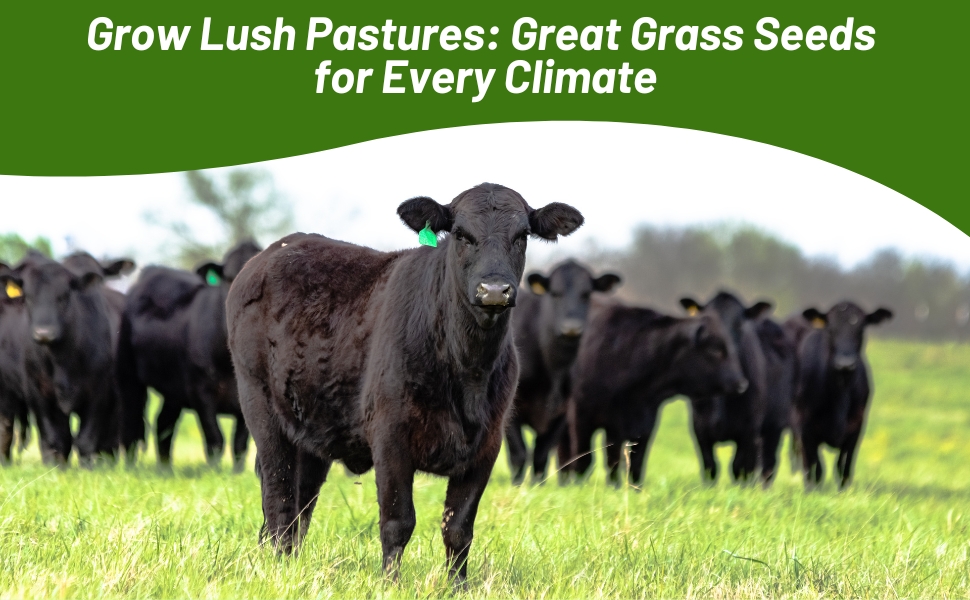
The above photo is courtesy of Noble Star Farm from southern Vermont. They say, "The only seeds that we have planted in our pastures and the only ones we ever will are from Outsidepride’s Horse Cold Climate pasture grass seed. This pasture has withstood the long Vermont winters where the temperatures are 25 degrees below zero, heavy snow and then the blistering heat and drought of summer. Simply put we would not use anything else."
This pasture mixture was especially designed for cold climates (Zones 3 - 5) where winters can get below zero for long periods of time with heavy snowfall as well. This grass can be used for horses, alpacas, llamas, sheep, and other grazing animals.
Approximate Percentages:
- 50% Ambassador Orchard Grass
- 30% Troy Kentucky Bluegrass
- 20% Climax Timothy
Ambassador Orchardgrass
Ambassador orchardgrass is a late maturing variety with high forage quality that is ideal for mixes. Ambassador is excellent for grazing and is highly palatable and digestable.
Ambassador is a long-lived perennial bunchgrass that shows exceptional cold tolerance. It has received approval from the National Grass Variety Review Board.
Troy Kentucky Bluegrass
Troy Kentucky Bluegrass is one of the most cold tolerant forage grade Kentucky bluegrasses on the market today. Very palatable for animals and has rhizomes so it helps keep pasture thick as wear and tear occurrs. Excellent winter hardiness as well as good disease resistance.
Climax Timothy
Climax timothy, an old standby by when it comes to pasture blends, is a winter hardy bunchgrass that is easy to establish and is well known for premium horse hay. Adapted to fertile, moist, medium heavy soils around the country. Responds rapidly to fertilization. Timothy mixes well in combination with other grasses and legumes. Timothy is easy to establish new pastures, and to overseed old pastures that need rejuventated.
Seeding Rate
Seeding rate 30 to 40 lbs/acre.

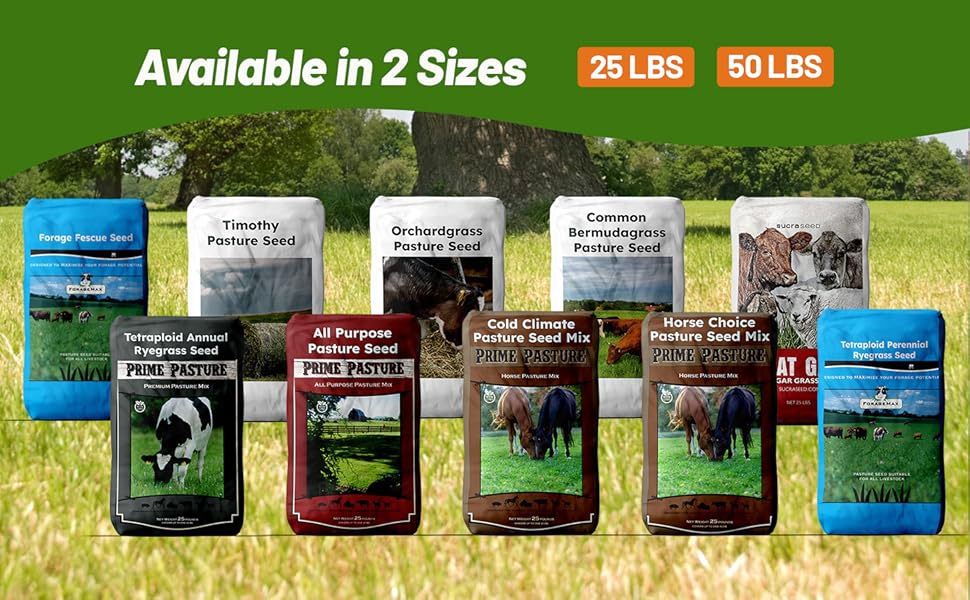

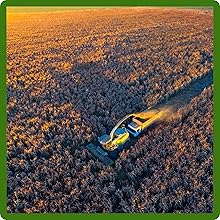

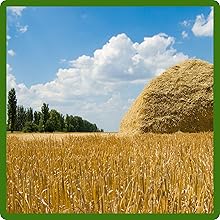
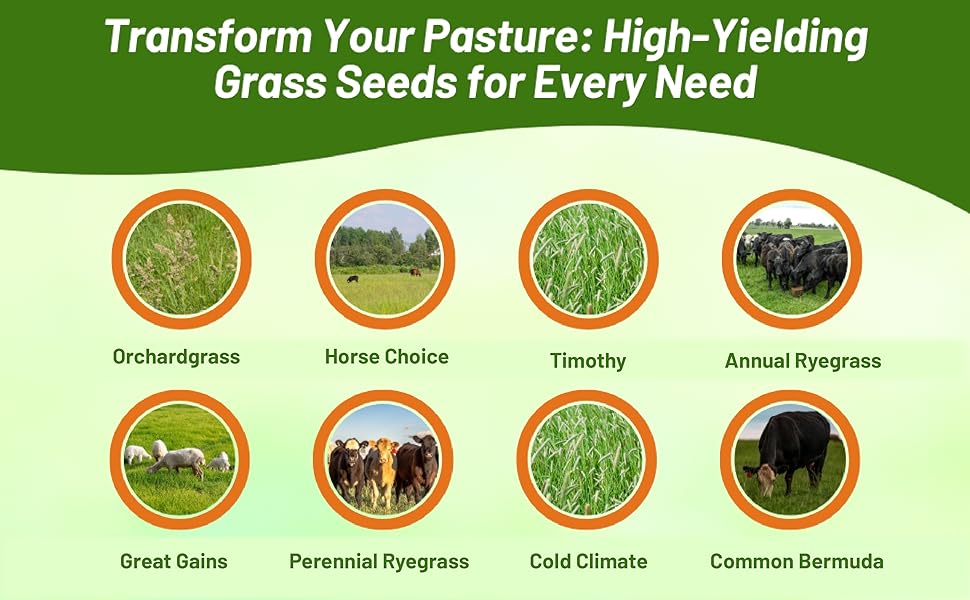

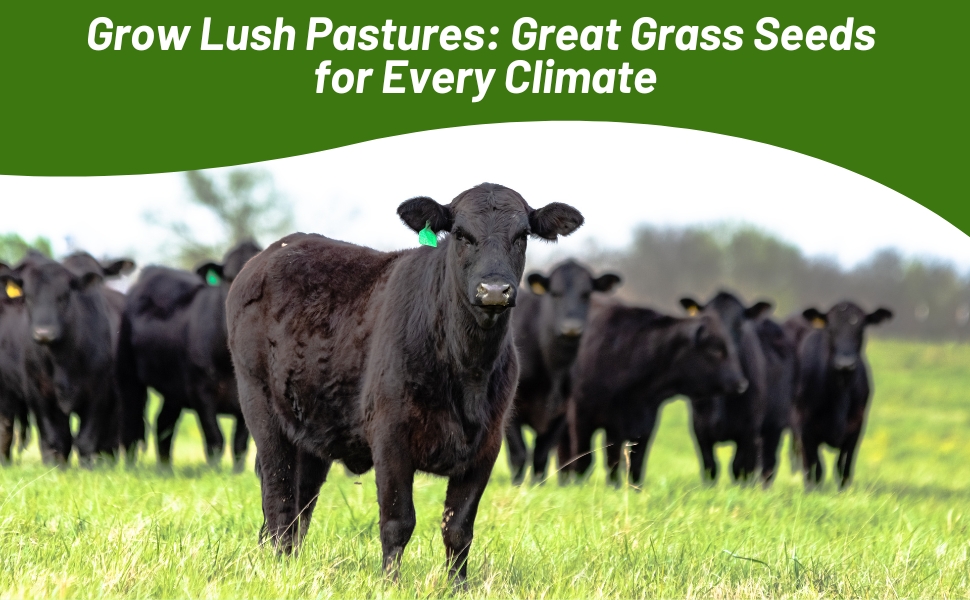
Grazer Orchard Grass Blend contains early, medium, and late maturing varieties.
Orchard grass pasture grass seed is a very robust, drought and shade tolerant grass. Orchard grass was introduced into the US from Great Britain, but grows throughout the world in areas of moderate to high rainfall with moderate winters and warm summers. Growth starts early in the spring as daytime temperatures increase, new tiller formation decreases and increases again only after the days become shorter in the fall. Orchard grass is more heat tolerant than timothy pasture grass, but less than tall fescue. However, orchard grass is very winter-hardy after establishment. It is rather aggressive in mixtures with other grasses, but we have developed varieties that combine the ability to produce stem-free grass under dry conditions with less aggressiveness towards other grasses. Orchard grass is good under hay, silage, and proper grazing management. We have blended together three different orchard grass varieties to give you a pasture grass that will develop at different stages. This blend of Amba, Olathe, and Athos orchard grasses make a winter hardy and drought tolerant blend.
Features of this blend are:
- Good grazing grass
- Excellent hay grass
- Excellent silage
- Good green chop
- High digestibility
- Good disease resistance
- High yield potential
- Excellent winter hardiness
- Not recommend for over-seeding or frost seeding
Orchard Grass Specifications
- Plant Rate: Seed Orchard grass at a rate 20 - 25 lbs/acre.
- Growth Habit: Perennial bunch
- Establishment Rate: 6 - 10 days of temperatures are warm and orchard grass seed kept moist
- Nitrogen Requirements: Medium to High from 40 - 80 lbs/acre.
- Soil pH Range: 5.5 - 7.5
- Minimum Rainfall: Greater than 18 inches
- Dry Matter Yield: 15 - 20 tons
- Regrowth: Fair to good
- Primary Utilization: Hay & Grazing
- Endophyte: No
































